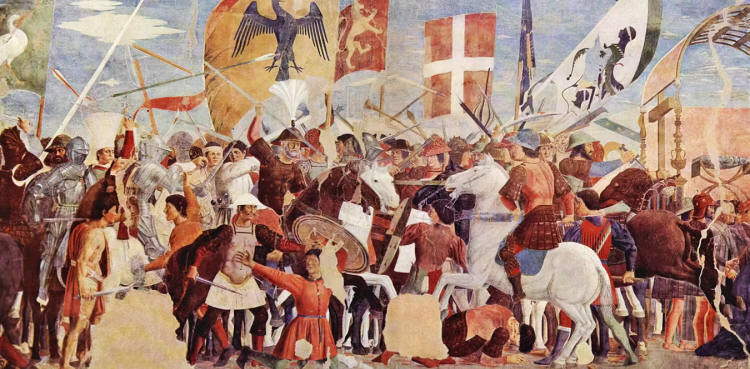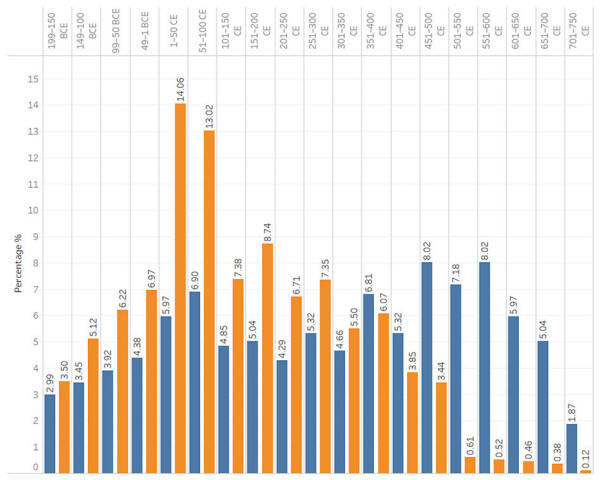|
between the eastern Romans and the Persians in 627, painted in 1452 by Pierro della Francesca. Wikimedia Commons, CC BY-NC-ND
Suggestions have emerged in recent decades that attribute,
This has prompted discussions over whether "536 was the worst year to be alive".
But, despite this, there are still many in academia who claim that changes to the climate and the outbreak of plague were catastrophic for the eastern Roman Empire.
Our research (Challenging the Significance of the LALIA and the Justinianic Plague - A Reanalysis of the Archaeological Record), which was published in November, shows that these claims are incorrect.
Our findings reveal that there was no decline in the 6th century, but rather a new record in population and trade in the eastern Mediterranean.
The eastern Roman Empire reached its greatest extent in the 6th century. Light purple represents its military gains from 533 and 565, a period in which the empire was supposedly devastated by climate change and plague. Simeon Netchev/World History Encyclopedia
We used both micro and large-scale data from various countries and regions.
Micro-scale data included examining small regions and showing when the decline in this region or site occurred.
Case studies, such as the site of the ancient city of Elusa in the north-western Negev desert in today's Israel, were reexamined.
The survey and excavation databases, which were made up of tens of thousands of sites, were used to map the general changes in the size and number of sites for each historical period.
The shipwreck database showed the number of shipwrecks for each half century.
This was used to highlight the shift in the volume of naval commerce.
Changes to naval commerce (150-750)
Graph comparing the percentage of shipwrecks in each half century, out of the total number of shipwrecks in that half of the Mediterranean, according to the Harvard and OXREP databases. Orange represents the western Mediterranean. Blue represents the eastern Mediterranean. Lev Cosijns and Haggai Olshanetsky
Our results showed that there was a high correlation in the archaeological record for numerous regions, covering,
There was also a strong correlation between the different types of data.
Both the smaller case studies, and the larger datasets, showed there was no decrease in population or economy in the 6th century eastern Roman Empire.
In fact, there seems to have been an increase in prosperity and demography.
The decline occurred in the 7th century, and so cannot be connected to sudden climate change or the plague which happened more than half a century before.
But Roman miscalculations, and their failure against their Persian (today's Iran) opponents, brought the entire area into a downward spiral.
This is not to say that there was no change in the climate during this period in some regions of the world.
For example,
And today's climate 'crisis' is on course to bring much greater changes than those seen in the past.
The sharp departure from historical environmental fluctuations has the power to irreversibly change the world as we know it...!
|




